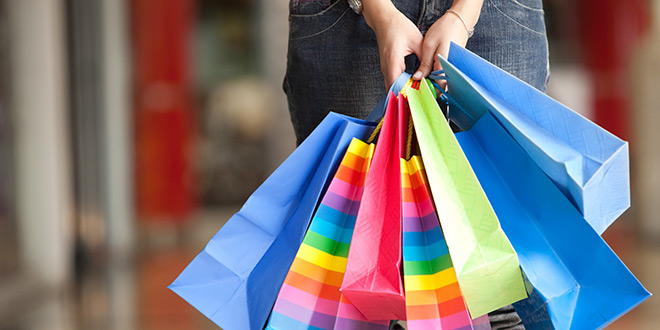When a customer walks through the doors of your retail operation, do they make a beeline to the items on their list? Or do they browse the store and discover items they’d like or forgot to pick up last time they shopped? Impulse buying isn’t something most consumers strive to do, but as a retailer, you can make impulse shopping opportunities available, showing them you can provide all the items they could want or need.
In the July issue of Hardware Retailing magazine, we focus on some ways that independent retailers are best merchandising and displaying impulse items. To dive deeper into the minds of consumers, Hardware Retailing spoke with Kit Yarrow, an award-winning consumer psychologist, professor and author of “Decoding the New Consumer Mind: How and Why We Shop and Buy.” To help you learn more about the psychology behind shopping and help understand impulse shopping, Yarrow shared her insights with Hardware Retailing.
 Hardware Retailing: Can you explain the basics of impulse shopping?
Hardware Retailing: Can you explain the basics of impulse shopping?
Kit Yarrow: If a retailer approaches impulse right, everybody benefits. First, you need to understand that there are three different categories of impulse.
The first category I define as providing immediate relief, joy or a reward. This would include a shopper purchasing a beverage at the checkout line because they feel they’ve earned it. These items are usually found at the checkout line and they may feel like an indulgence. This is the impulse category most retailers focus their attention on but it’s kind of a no-brainer because it entices a customer in a moment of exhaustion from shopping.
The second category is what I would define as a reminder add-on purchase. Today’s consumer is more forgetful than ever. I’ve never seen an era of more confusion of consumers than I have today. I think this would definitely be true for those visiting the hardware store. A customer can easily return from the hardware store and realize they forgot a key element for their project. The key to being successful is to have impulse add-on purchases located close to what it goes with. The way people buy is more project oriented, so by cross-merchandising items from different categories together, this impulse opportunity will make consumers thankful they picked your store.
The third category of impulse is an irresistible sensory purchase. There is something very different about how people shop today. Consumers are more susceptible to sensory cues like smells and tactile things or visual delights. They’re drawn to the sensory refresh. It can be found anywhere in the store but the key is to give people a reason to stop and enjoy it. You can appeal to any of the senses, like sight, smell, touch and more.
HR: What tactics can retailers use to encourage or lead to impulse sales?
KY: You can’t rely on checkout anymore. Sales of magazines and gum is way down and more people look at their phones while waiting in the checkout line, so you have to engage them throughout the store.
I think in addition to understanding a holistic purchase, consumers are more motivated by their senses than they were before. People are distracted and we have overloaded our brains, which requires more stimulation. People are forgetful, paying less immediate attention, are less logical and more emotionally driven.
I would focus on the look, the convenience of the store, the visual cues that help people remember what they need and the tactile emphasis of items.
HR: What tactic would you recommend when working with and selling to millennials?
KY: I think the thing that comes to mind with millennials is that they don’t have the home skills that older generations have. These customers want more help in the form of kits to make it easier to complete a project.
Millennials love things like going to a bookstore and seeing a staff picture next to a recommended book. This helps them connect to the people working in the store, encouraging them to make a purchase. This would be a great concept to try in a hardware store. Create unique signage of an employee’s face next to a product and why they like it.
HR: What final advice do you have for an independent home improvement retailer on how to increase impulse purchases in their stores?
KY: Looking at small businesses, retailers who have checkouts throughout the store is wonderful. Video displays in stores are another way to pull customers in and communicate to them quickly. These show a retailer is trying hard to help their customers. Use technology in the store where you can to help encourage people to purchase your products.
I’d also encourage retailers to connect with their communities and be as a part of their lives as possible. Promoting the local aspect is another draw for customers to shop in your business over the big-box chains.
 Hardware Retailing The Industry's Source for Insights and Information
Hardware Retailing The Industry's Source for Insights and Information






